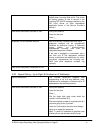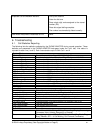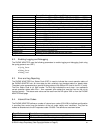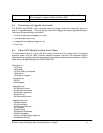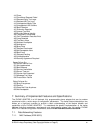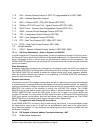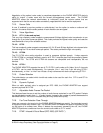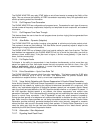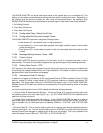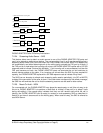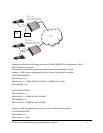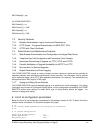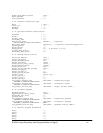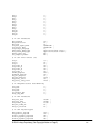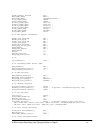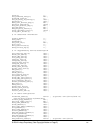
The PHONE ADAPTER can signal hook flash events to the remote party on a connected call. This
feature can be used to provide advanced mid-call services with third-party-call-control. Depending on
the features that the service provider will offer using third-party-call-control, the following three
PHONE ADAPTER features may be disabled to correctly signal a hook-flash event to the softswitch:
1. Call Waiting Service
2. Three Way Call Service
3. Three Way Conf Service
7.2.18. Configurable Flash / Switch Hook Timer
7.2.19. Configurable Dial Plan with Interdigit Timers
The PHONE ADAPTER has three configurable interdigit timers:
• Initial timeout (T) = handset off hook, no digit pressed yet.
• Long timeout (L) = one or more digits pressed, more digits needed to reach a valid number
(as per the dial plan).
• Short timeout (S) = current dialed number is valid, but more digits would also lead to a valid
number.
7.2.20. Message Waiting Indicator Tones – MWI
7.2.21. Polarity Control
The PHONE ADAPTER allows the polarity to be set when a call is connected and when a call is
disconnected. This feature is required to support some pay phone system and answering machines.
7.2.22. Calling Party Control – CPC
CPC signals to the called party equipment that the calling party has hung up during a connected call
by removing the voltage between the tip and ring momentarily. This feature is useful for auto-answer
equipment which then knows when to disengage.
7.2.23. International Caller ID Delivery
In addition to support of the Bellcore (FSK) and Swedish/Danish (DTMF) methods of Caller ID (CID)
delivery, release 2.0 adds a large subset of ETSI compliant methods to support international CID
equipment. The figure below shows the CID/CIDCW architecture used in the PHONE ADAPTER.
Different flavors of CID delivery method can be obtained by mixing-and-matching some of the steps
as shown.
It should be noted that the choice of CID method will affect the following features:
• On Hook Caller ID Associated with Ringing – This type of Caller ID is used for incoming calls when
the attached phone is on hook (see Figure 1 (a) – (c). All PHONE ADAPTER CID methods can be
applied for this type of caller-id
• On Hook Caller ID Not Associated with Ringing – In the PHONE ADAPTER this feature is used for
send VMWI signal to the phone to turn the message waiting light on and off (see Figure 1 (d) and (e)).
This is available only for FSK-based caller-id methods: “Bellcore”, “ETSI FSK”, and “ETSI FSK With
PR”
• Off Hook Caller ID – This is used to delivery caller-id on incoming calls when the attached phone is
off hook (see Figure 1 (f)). This can be call waiting caller ID (CIDCW) or to notify the user that the far
end party identity has changed or updated (such as due to a call transfer). This is only available if the
caller-id method is one of “Bellcore”, “ETSI FSK”, or “ETSI FSK With PR”.
© 2004 Linksys Proprietary (See Copyright Notice on Page 2)
99



